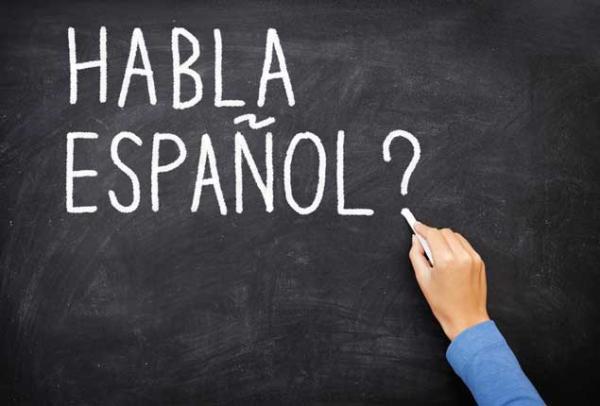Syntax develops the backbone of any language, allowing us to reveal our ideas as well as thoughts coherently. Spanish, with its unique grammar and phrase structure, has its very own collection of guidelines when it comes to sentence building. In this short article, we will certainly dive right into the ins and outs of syntax in Spanish, discovering the crucial aspects that form the language. By acquiring a strong understanding of Spanish sentence structure, learners can communicate successfully as well as convey their designated significance precisely.
Subject-Verb-Object (SVO) Order
Like several languages, Spanish follows a subject-verb-object (SVO) order as its standard sentence framework. The subject normally comes prior to the verb, which is then complied with by the item. “Yo estudio español” (I research Spanish). Understanding this essential order offers a solid foundation for building sentences in Spanish.
Subject Pronouns
Subject pronouns play a vital function in Spanish syntax. While they are frequently consisted of in English, they are frequently omitted in Spanish unless needed for explanation or focus. As an example, as opposed to saying “Yo tengo un libro” (I have a publication), it is extra usual to merely say “Tengo un libro” (I have a publication). Nevertheless, subject pronouns are used when contrasting the topic or highlighting, such as “Yo sí hablo español” (I do speak Spanish).
Verb Conjugation
Conjugating verbs properly is important in Spanish sentence structure. Verbs transform their types based on the subject, tense, and state of mind. It is critical to choose the proper verb kind to match the topic in order to maintain contract. “Él habla español” (He talks Spanish) and “Ellos hablan español” (They speak Spanish) show just how the verb “hablar” adjustments based on the topic.
Agreement of Nouns as well as adjectives
In Spanish, nouns and adjectives must concur in gender and also number. Adjectives customize nouns, as well as they must match the gender (womanly or masculine) and number (singular or plural) of the noun they describe. As an example, “El libro es interesante” (The book is interesting) utilizes the manly singular form of both the write-up as well as the adjective. Complying with adjective-noun contract enhances syntax and accuracy.

Indirect and Direct Object Pronouns
Spanish includes both indirect and straight things pronouns, which are essential for effective sentence building and construction. Straight things pronouns change the straight things of a verb, while indirect things pronouns change the indirect object. Using these pronouns enables for smoother and also a lot more succinct sentences. For instance, as opposed to stating “Veo a María” (I see María), one can state “La veo” (I see her) by changing the straight item with the suitable pronoun.
Adverb Placement
Adverbs offer added details regarding verbs, adjectives, or other adverbs. In Spanish sentence framework, adverbs usually appear after the verb they modify. For example, “Ella canta bien” (She sings well) shows the positioning of the adverb “bien” (well) after the verb “canta” (sings). Adverb placement aids preserve quality as well as comprehensibility in sentence building and construction.
Exclamatory and also interrogative Sentences
Spanish uses concern words (interrogatives) as well as exclamatory words to create exclamatory and interrogative sentences. These words, such as “qué” (what), “cómo” (just how), as well as “cuánto” (just how much), generally appear at the beginning of the sentence. For example, “¿ Qué quieres?” (What do you want?) and also “¡ Cuánto tequiero!” (How much I enjoy you!) demonstrate the use of exclamatory as well as interrogative syntax in Spanish.
Secondary Clauses
Secondary conditions play a considerable role in Spanish syntax, including complexity and deepness to interaction. These provisions, presented by combinations such as “que” (that), “cuando” (when), or “porque” (because), supply additional information or express partnerships in between concepts. As an example, “Voy a estudiar porque quiero aprender” (I am going to study since I wish to learn) showcases making use of a subservient clause to express domino effect.
Inversion for Emphasis
In Spanish, sentence framework can be inverted to position focus on a details component. By putting the subject after the verb, the emphasis changes to the subject itself. Instead of claiming “La feast es mañana” (The event is tomorrow), one can claim “Mañana es la fiesta” (Tomorrow is the celebration) to highlight the time element.
Usage of Prepositions
Prepositions are crucial in Spanish sentence framework, suggesting connections between words and sharing location, instructions, and much more. Recognizing the appropriate usage of prepositions boosts the clarity and precision of sentences. “Vivo en Madrid” (I live in Madrid) shows the usage of the preposition “en” (in) to indicate area.
Verdict
Recognizing sentence framework is fundamental to understanding Spanish grammar and efficiently revealing concepts. By understanding the crucial aspects of Spanish sentence structure, including subject-verb-object order, verb conjugation, adjective-noun contract, and also making use of adverbs and pronouns, students can construct coherent as well as clear sentences. Remember to exercise sentence building as well as take notice of arrangement, positioning, as well as word order. With commitment and method, you will with confidence browse Spanish syntax and also communicate with fluency as well as precision. ¡ Buena suerte! (Good luck!).


